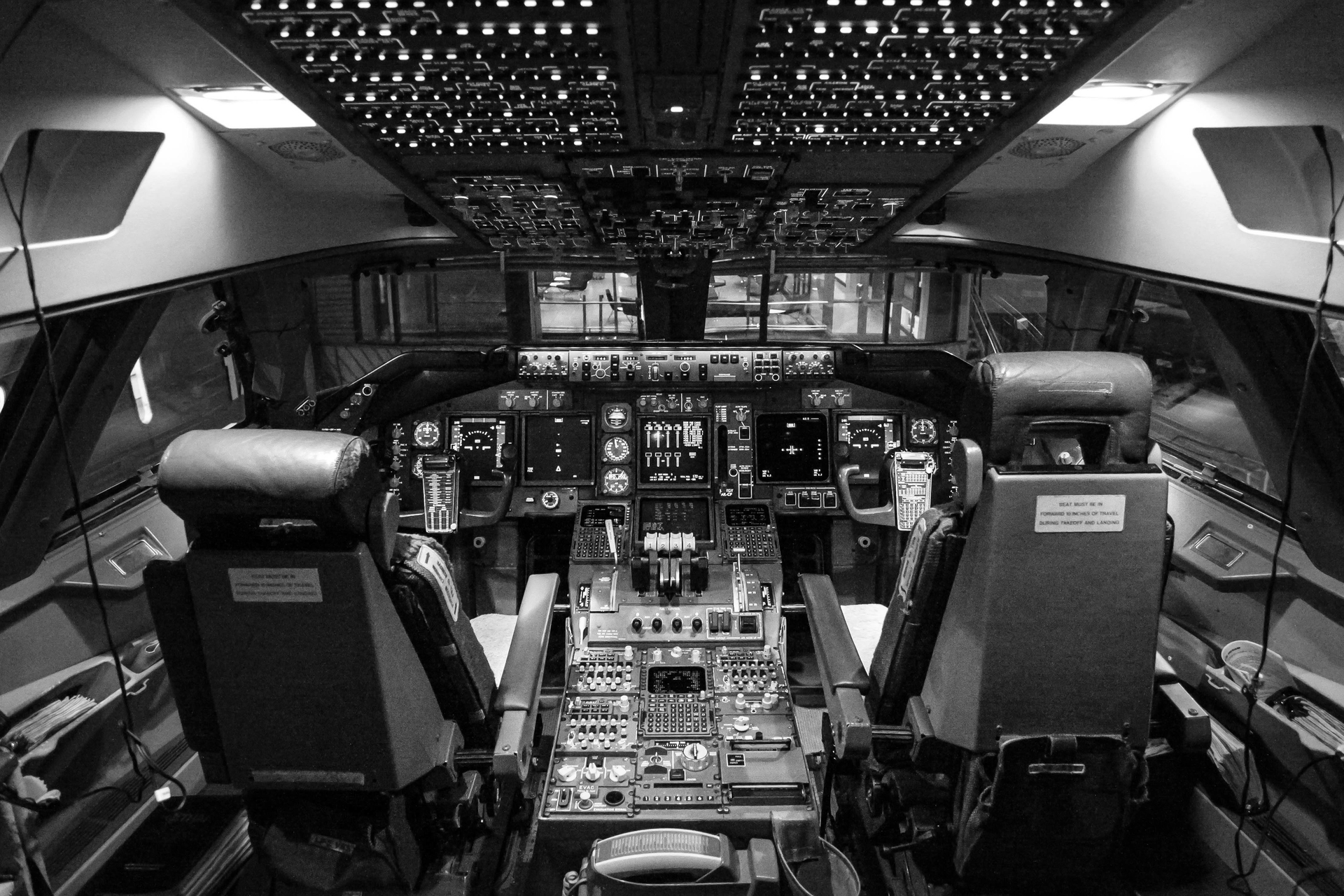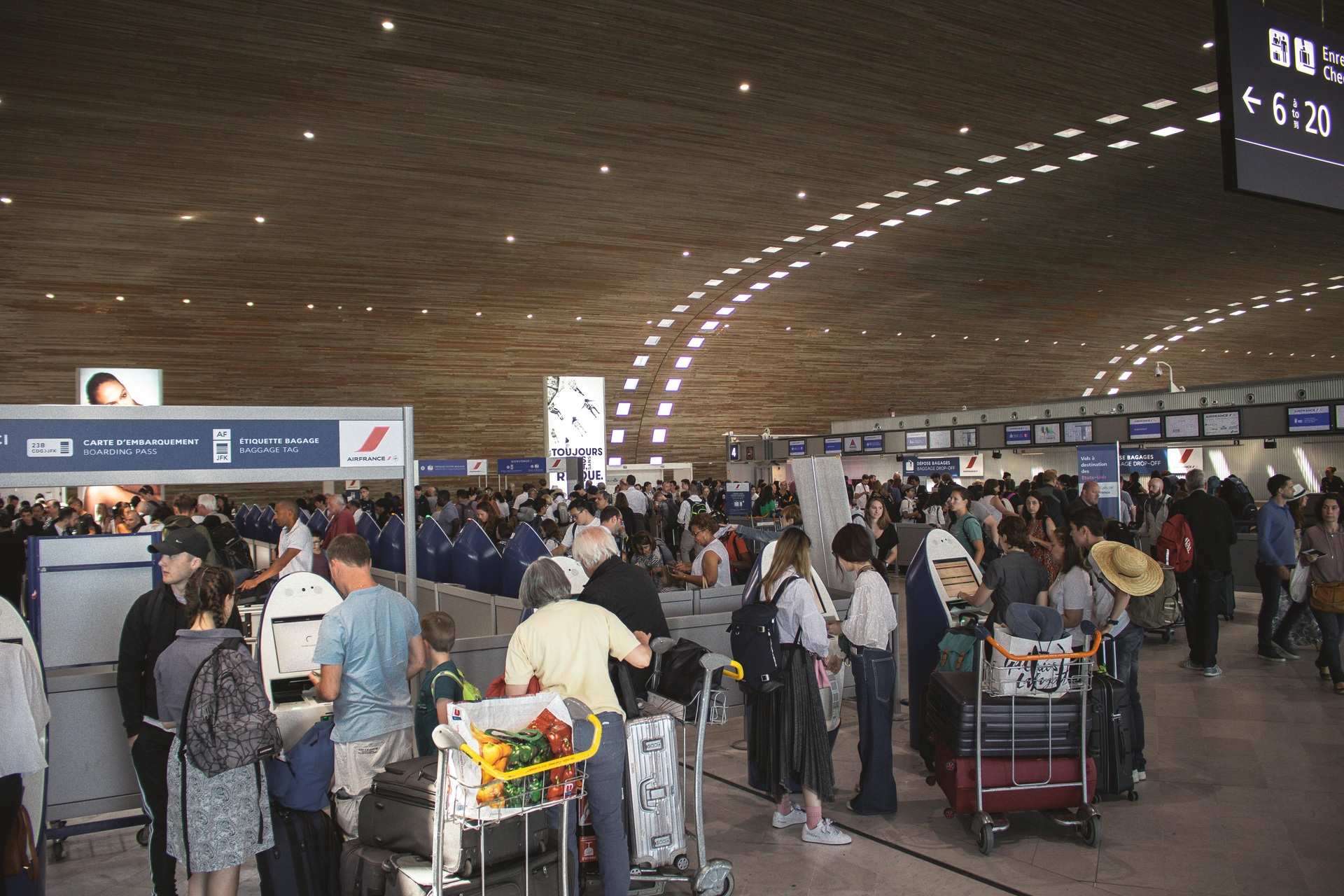
AeroGenie — Seu copiloto inteligente.
Integrando Blockchain para Rastreabilidade na Manutenção da Aviação
agosto 11, 2025
O blockchain está trazendo rastreabilidade cristalina para a manutenção da aviação. Ele está ajudando empresas a criar registros à prova de violação, rastrear peças com confiança e reduzir erros. Veja como o setor o utiliza hoje e para onde o blockchain está caminhando.
O termo blockchainestá surgindo em todos os lugares, mas seu significado é frequentemente mal compreendido. Quando as pessoas ouvem a palavra blockchain, muitas vezes pensam em criptomoedas, carteiras digitais e na dark web.
Na realidade, porém, o blockchain é um sistema digital seguro que está remodelando fundamentalmente a maneira como armazenamos, compartilhamos e verificamos dados, e tem um potencial surpreendente para o setor da aviação.
Blockchain é um livro-razão digital descentralizado (arquivos compartilhados ponto a ponto) que registra transações em vários sistemas de forma segura. Esses sistemas podem incluir sistemas de planejamento de recursos empresariais (ERP),MROsoftware, plataformas de gerenciamento de inventário, plataformas de gêmeos digitais e ferramentas de monitoramento da saúde da aeronave.
O livro-razão é seguro e à prova de violação. Ele funciona agrupando as transações em "blocos" e, em seguida, encadeando-as em ordem cronológica. Uma vez que os dados são inseridos no livro-razão e verificados, eles não podem ser removidos ou alterados de forma alguma. Os lançamentos fornecem um registro de auditoria claro de todas as atividades.
Com registros inalteráveis (frequentemente chamados de "imutáveis"), o blockchain é particularmente adequado para a rastreabilidade de peças. Isso é especialmente poderoso para a gestão da cadeia de suprimentos (SCM) e logística, visto que as redes abrangem continentes e dependem de inúmeros provedores de subníveis.
Dentro desse vazio de dados, o blockchain pode muito bem preencher as lacunas. Pesquisas da McKinsey têm consistentemente constatado que a natureza "permanente" da tecnologia no registro de transações de dados é ideal para gerenciar uma rede global de suprimentos (McKinsey).
Além do armazenamento seguro e inalterável, o blockchain também é uma verificação poderosa para garantir que as informações registradas sejam precisas.
Cada atualização de uma blockchain é verificada por computadores chamados nós, que ajudam a administrar a rede. Esses nós concordam sobre o que é adicionado ao livro-razão, usando regras como prova de trabalho (como a resolução de problemas matemáticos complexos) ou prova de participação (propriedade da rede como forma de compromisso). Esse processo em camadas impede que qualquer empresa ou usuário tenha controle total.
Por que a rastreabilidade é importante nas cadeias de suprimentos
Com produtos regulamentados em termos de qualidade e segurança, as empresas precisam conhecer toda a origem e a jornada de um produto. Embora a fabricação final possa ser feita com segurança e ética em uma fábrica local, um único componente de aviação pode conter centenas de peças de dezenas de países.
Essa caixa-preta de potenciais lacunas de segurança coloca setores altamente regulamentados, como a aviação, em constante risco de segurança. As empresas precisam confiar, muitas vezes às cegas, em uma vasta rede global para entregar com segurança produtos bem-fabricados e armazenados adequadamente, que atendam aos padrões de qualidade e regulatórios.
Com a rastreabilidade, as empresas podem rastrear a jornada completa de cada peça emtodas as etapas da cadeia de suprimentos. Isso permite que as empresas identifiquem e isolem rapidamente lotes defeituosos, verifiquem a autenticidade, reduzam os riscos de falsificação e atendam aos requisitos de segurança, sustentabilidade e padrões trabalhistas.
Nas cadeias de suprimentos tradicionais, sem blockchain, o ônus da rastreabilidade total não pode ser alcançado. Os dados são frequentemente limitados, presos em sistemas isolados, documentação em papel ou formatação de dados inconsistente.
Com o blockchain, tudo é registrado. Desde quando e onde a matéria-prima é processada até o momento em que é enviada ao cliente final, cada processo, movimentação e troca de mãos é registrado em um blockchain que todos os stakeholders podem acessar em tempo real.
Essa abertura permite o rastreamento instantâneo de mercadorias, o que é essencial para minimizar pontos cegos ou acelerar os tempos de resposta em caso de recalls ou outras interrupções.
Por que a manutenção da aviação precisa de uma atualização do blockchain
A indústria aeroespacial é uma das mais rigorosamente regulamentadas do mundo, com o escrutínio se intensificando nos últimos meses. Registros de manutenção, certificações de peças e rastreabilidade são necessários para comprovar a aeronavegabilidade, mas muitas empresas e provedores de MRO dependem de ferramentas obsoletas (incluindo caneta e papel) e softwares legados que nunca foram desenvolvidos para a complexidade global atual.
As consequências dessa abordagem fragmentada estão à mostra. Em 2023, um escândalo envolvendo a AOG Technics e supostas documentações de peças falsificadas abalou o setor, forçando companhias aéreas como a United e a Delta a suspender dezenas de aeronaves para inspeção.
Em resposta, uma coalizão de grandes participantes da indústria, incluindo Boeing, GE Aerospace e American Airlines, formou a Aviation Supply Chain Integrity Coalition para melhorar a rastreabilidade e proteger contra peças não aprovadas (Semana da Aviação).
Peças de aviação são mais complicadas do que a maioria, pois podem mudar de mãos diversas vezes ao longo das décadas, transitando entre OEMs, empresas de leasing, companhias aéreas, MROs independentes e revendedores.
Cada transferência introduz uma nova oportunidade para erro humano, registros incompletos ou até mesmo fraude. O white paper de rastreabilidade de 2023 da CIMPA observa: "Ainda é muito difícil ter uma continuidade digital desde o fabricante original da aeronave até a companhia aérea, passando pelos participantes da cadeia de suprimentos" devido a inconsistências em formatos, padrões e recursos de TI.Livro Branco da CIMPA).
Um blockchain para aviação soluciona diretamente essas deficiências. Ao servir como uma fonte compartilhada de informações, ele permite que todas as partes autorizadas acessem os mesmos registros de uso, seguros e inalterados, durante todo o ciclo de vida de um componente. Isso melhora drasticamente a confiabilidade dos registros para inspeções e certificações de aeronavegabilidade, sendo especialmente valioso para peças usadas ou revisadas.
Vamos explorar três casos de uso atuais de blockchain na aviação.
Caso de uso 1: Proveniência e rastreabilidade de peças
Para a aviação, a aplicação mais promissora do blockchain pode estar na criação de uma trilha de auditoria imutável para peças, ou o que é frequentemente chamado de "rastreabilidade de volta ao nascimento". Rastreabilidade de volta ao nascimento significa ter um registro completo e verificável do histórico de uma peça, desde sua fabricação original até sua configuração e uso atuais.
Essa tecnologia já está sendo utilizada na indústria aeroespacial. O SkyThread for Parts, uma plataforma baseada em blockchain desenvolvida pela AFI KLM E&M e pelo Parker Aerospace Group, está sendo usado para rastrear centenas de milhares de componentes em aeronaves Boeing 787.Semana da Aviação).
Esta é uma grande vitória em termos de segurança e economia de custos, pois registros ausentes ou imprecisos podem resultar em peças em quarentena, atrasos em reparos e aumento de custos. A AFI KLM E&M relata que o uso do SkyThread "reduz significativamente o número de peças recebidas em quarentena", o que, por sua vez, agiliza a manutenção e proporciona operações mais tranquilas.Semana da Aviação).
Outras empresas de aviação estão usando IA em conjunto com blockchain para aprimorar a rastreabilidade de peças. A GA Telesis, por exemplo, fez uma parceria com a Alitheon para integrar IA óptica à sua plataforma Wilbur.
A ferramenta, chamada FeaturePrint, cria uma “impressão digital” de cada peça usando câmeras padrão e verificação de blockchain, eliminando assim a necessidade de etiquetas ou rótulos que podem ser danificados ou adulterados.
A Alitheon afirma que as probabilidades de dois FeaturePrints serem idênticos são de “uma em um trilhão”, tornando este um método praticamente infalível para provar a autenticidade (Semana da Aviação).
Caso de uso 2: registros de manutenção e eventos do ciclo de vida
O blockchain também pode registrar eventos de manutenção ao longo de todo o ciclo de vida da aeronave, capturando quem realizou qual serviço, quando, onde e sob quais condições. Esses registros são um ponto de referência vital para conformidade, investigações de segurança, auditorias de seguros e eventuais avaliações de revenda.
Hoje em dia, os dados de manutenção são frequentemente armazenados em sistemas desconectados entre OEMs, operadores e provedores de MRO. Como resultado, inconsistências, atrasos ou registros ausentes são comuns, embora um único erro possa custar milhões em tempo de inatividade às companhias aéreas.
Um artigo de 2023 noRevista Internacional de Economia da Produçãoargumenta que a blockchain resolve esses problemas de coordenação ao permitir “uma única fonte de verdade que sincroniza dados em tempo real entre todas as partes interessadas na cadeia de valor de manutenção” (ScienceDirect: IJPE).
A plataforma de blockchain para aviação SkyThread for Parts inclui registro automático entre seus recursos, permitindo a captura sem atrito de todas as instalações, reparos e histórico completo de serviços de peças. Cada peça da aeronave possui seu próprio registro de manutenção, em um formato de fácil acesso para compradores, locadores ou reguladores.
As partes interessadas também podem confiar nos dados. O design ultrasseguro do Blockchain minimiza o risco de entradas falsificadas, e contratos inteligentes podem ser usados para sinalizar serviços atrasados ou verificar credenciais de técnicos.Fronteiras).
Caso de uso 3: Contratos inteligentes para verificação em tempo real
Contratos inteligentes, códigos autoexecutáveis armazenados no blockchain, oferecem uma maneira poderosa de aplicar regras e automatizar ações sem intervenção manual.
Na MRO da aviação, eles podem garantir que condições específicas sejam atendidas antes que uma peça seja instalada, um serviço seja concluído ou o pagamento seja liberado.
Por exemplo, um contrato inteligente pode verificar se um componente passou nos testes de controle necessários e se o técnico é certificado antes de permitir sua instalação. Uma vez validadas todas as condições, o contrato é executado automaticamente, registrando o evento, atualizando o inventário e até mesmo liberando o pagamento ou notificando os auditores.
Este tipo de automação reduz atrasos, melhora a responsabilização e minimiza a probabilidade de erro ou fraude. Como aponta um estudo de 2023 emComputadores na Indústriaobserva: “Contratos inteligentes em blockchain reduzem a necessidade de intermediários em tarefas de verificação e permitem mecanismos autônomos de construção de confiança” (ScienceDirect: Computadores na Indústria).
O White Paper de Rastreabilidade da CIMPAdestaca vantagens semelhantes, descrevendo como o blockchain e os contratos inteligentes “eliminam problemas de reconciliação e melhoram a confiabilidade dos dados” ao longo do ciclo de vida de um produto (Livro Branco da CIMPA).
Em suma, contratos inteligentes reduzem o atrito. Em vez de perseguir aprovações ou vasculhar pastas, as equipes de manutenção e os gerentes de qualidade obtêm validação instantânea com base em regras transparentes e codificadas permanentemente.
Barreiras à implementação
Apesar de todo o seu potencial, o blockchain para aviação tem demorado a se popularizar. Embora a tecnologia tenha se difundido no setor, ainda existem grandes obstáculos que impedem a adoção em larga escala.
A interoperabilidade é um dos maiores desafios. Muitas partes interessadas (OEMs, companhias aéreas, provedores de MRO e agências governamentais) utilizam diferentes sistemas e formatações para gerenciar registros. Para uma integração completa com o blockchain, todos os participantes da cadeia de suprimentos precisariam concordar, adotar e integrar os mesmos métodos de rastreabilidade digital (Livro Branco da CIMPA).
A privacidade dos dados é outra preocupação. Nesse aspecto, a transparência do blockchain também é seu calcanhar de Aquiles, visto que os dados da aviação contêm informações altamente sensíveis. Há desafios para decidir o que é registrado on-chain (público e compartilhado) e off-chain (privado), e como gerenciar as permissões de acesso.
As empresas devem decidir o que será registrado on-chain (público ou compartilhado) e off-chain (privado), e como gerenciar as permissões. Muitos especialistas em blockchain defendem uma solução híbrida que forneça estruturas de blockchain com permissão e divulgação seletiva de dados, em um equilíbrio entre transparência e privacidade.Pesquisa de Energia de Fronteiras).
Custo e escalabilidade também são fatores importantes. A transição de sistemas legados para uma arquitetura baseada em blockchain exige novas tecnologias, novos fluxos de trabalho e treinamento significativo.
Muitas pequenas e médias empresas não têm a maturidade digital, entre outros recursos, para adotar o blockchain. Grandes parceiros devem liderar o movimento.
Por fim, há um ambiente regulatório cético. Autoridades como a FAA e a EASA precisam reconhecer os registros de blockchain como legalmente válidos para auditorias de conformidade e certificados de aeronavegabilidade. Muitas organizações estão cautelosas quanto a investir em blockchain antes da aprovação da regulamentação e continuarão a depender exclusivamente de tecnologias descentralizadas até lá.
Programas piloto e de impulso da indústria
Apesar desses contratempos, o progresso está acontecendo — e rapidamente. As empresas estão cada vez mais lançando programas piloto e formando consórcios para experimentar o blockchain na rastreabilidade da aviação.
A GA Telesis é uma das pioneiras mais visíveis. Sua plataforma de procedência (rastreamento) de peças Wilbur combina a tecnologia FeaturePrint da Alitheon (serialização sem toque), IA óptica e blockchain para criar um registro totalmente digitalizado da jornada de cada peça.Alitheon,Semana da Aviação).
Enquanto isso, a implantação do SkyThread for Parts continua a crescer. Inicialmente utilizada em sua fase piloto para rastrear componentes do Boeing 787, a plataforma está sendo adotada por outras empresas, como a AJW Technique e a L3 Harris (Semana da Aviação).
E os primeiros sinais de interesse regulatório estão surgindo. Antecipando futuras aprovações, a Aviation Supply Chain Integrity Coalition (ASCIC) está se preparando. A ASCIC publicou um conjunto de recomendações para rastreabilidade de peças em seu relatório de outubro de 2024 (Fornecedores de Aviação).
Entre as conclusões do relatório:
- A rastreabilidade digital é essencial:A ASCIC pede a adoção de padrões digitais uniformes de rastreabilidade.
- Padrões mínimos de dados necessários:A coalizão descreve elementos de dados fundamentais (por exemplo, número da peça, número de série, OEM, registros de manutenção) que devem acompanhar cada peça.
- Apelo à adoção e colaboração em toda a indústria: A ASCIC recomenda que todos os participantes da cadeia de suprimentos (arrendadores, OEMs, MROs, companhias aéreas, fornecedores) implementem práticas digitais consistentes. Nenhuma organização pode reparar a lacuna de rastreabilidade sozinha. A adoção e a coordenação plenas são necessárias.
- Tecnologia emergente como parte da solução:Embora seja independente de tecnologia, o relatório aponta o blockchain e outras tecnologias digitais seguras como facilitadores essenciais de confiança e transparência.
- O reconhecimento regulatório é crucial:A ASCIC enfatiza a necessidade de órgãos reguladores como a FAA e a EASA reconhecerem formalmente os dados de rastreabilidade digital como legalmente válidos para conformidade.
O que é preciso para escalar o blockchain na manutenção da aviação
Conforme descreve o relatório da ASCIC, será necessária uma ampla colaboração para que uma nova tecnologia passe do piloto para a produção.
Conseguir adesão é o primeiro obstáculo, pois o blockchain só funciona se outros o adotarem. A adoção bem-sucedida depende de confiança e colaboração.
Em seguida, as organizações devem concordar com os padrões de dados, incluindo definições e formatos de dados consistentes (JBSM).
Além disso, as empresas investem na infraestrutura subjacente necessária para a tecnologia blockchain, incluindo ativos humanos e digitais. Isso inclui conectores de API (para sistemas legados), nós de blockchain baseados em nuvem, bibliotecas de contratos inteligentes e qualificação de engenheiros e gerentes de dados.
Por último, mas talvez o mais crítico, deve haver um modelo de incentivo claro. As partes interessadas devem ver um benefício mensurável e definido, como a redução do tempo de resposta para manutenção (TAT), menos aeronaves paradas ou auditorias regulatórias mais rápidas e simplificadas. Pessoas maiores e com bons recursos podem precisar apoiar pequenas empresas que não têm condições de financiar uma mudança na infraestrutura técnica.
Os primeiros a adotar, em geral, têm maior probabilidade de investir se puderem ver como o blockchain reduzirá o custo e a complexidade da rastreabilidade ao longo do tempo (Livro Branco da CIMPA).
Avançando da rastreabilidade para a inteligência
Os recursos do blockchain para a aviação não se limitam à rastreabilidade. Ele tem o potencial de se tornar seu centro operacional para agendamento de manutenção, reparos e registros, ciclos de vida de peças e análise aprofundada de dados.
Em conjunto com IA e aprendizado de máquina, os dados de blockchain podem detectar padrões, prever falhas e automatizar ações corretivas. Sistemas de IA já estão sendo usados para identificar peças mais propensas a defeitos, detectar anomalias de manutenção e otimizar o estoque de peças de reposição com base em padrões de uso.
O blockchain também pode ser combinado com análises preditivas para tarefas mais dinâmicas, como agendamento de reparos, inspeções e reordenamentos automáticos.
Essa abordagem dupla também possibilita modelos mais novos e sofisticados, como a previsão por gêmeos digitais e a logística baseada em desempenho (PBL). Mas, para que essa abordagem integrada funcione, os modelos precisam de dados precisos e confiáveis em grande escala — algo que o blockchain é excepcionalmente capaz de fornecer.
Os pesquisadores preveem que o blockchain será uma “infraestrutura fundamental” para a próxima geração de inteligência operacional na aviação e outras indústrias de alto risco (Fronteiras).
O papel do blockchain no futuro da manutenção da aviação
O blockchain na manutenção da aviação já está sendo ativamente testado, usado e refinado na aviação para otimizar a rastreabilidade de peças, atualizações de registros de manutenção e conformidade orientada por contratos inteligentes.
Os testes piloto iniciais mostram-se promissores. O blockchain pode preencher as lacunas em rastreabilidade, confiança e coordenação que os sistemas legados nunca foram projetados para resolver.
Mas não importa quão boas sejam as soluções de blockchain para a aviação, o sucesso dependerá de mais do que provas de conceito bem-sucedidas. Para que o blockchain funcione, é necessário um compromisso total da indústria com participação total do setor aeroespacial, governança compartilhada e alinhamento regulatório.
O apoio regulatório tende mais para o "quando" do que para o "se", mas não há garantias. Ainda assim, com pesos pesados como Boeing, GE e Air France Industries investindo em sistemas apoiados por blockchain, a futura adesão governamental parece provável. A aprovação total provavelmente dependerá da resolução de preocupações com padronização, privacidade de dados e admissibilidade legal de registros digitais.
O impulso para a rastreabilidade por blockchain na aviação já chegou, mas o setor como um todo agirá com cautela. Enquanto isso, é importante se preparar para uma eventual aprovação. Mesmo que os órgãos reguladores demorem mais do que o previsto ou não aprovem a tecnologia da maneira que os líderes do setor esperam, sua organização ainda se beneficiará. Eliminar lacunas de visibilidade, limpar dados fragmentados e modernizar fluxos de trabalho legados já são grandes vitórias por si só.
Pronto para dar o primeiro passo em direção a uma rastreabilidade mais inteligente?
O ePlaneAI ajuda organizações de aviação a modernizar a visibilidade da cadeia de suprimentos, independentemente de onde você esteja em sua jornada digital.
Vamos falar sobre o que realmente é possível hoje —>Contate-nos.
Tendências de manutenção da aviação que podem ganhar força em circunstâncias incertas
As aeronaves estão em serviço por mais tempo, as cadeias de suprimentos são um barril de pólvora e a tecnologia está evoluindo da noite para o dia. Descubra as tendências de manutenção que estão ganhando força e o que elas significam para as operadoras que buscam se manter no ar e lucrativas.

October 2, 2025
Escolhendo as peças certas da aeronave com análise de tolerância a danos
O futuro da segurança da aviação está nas peças. Peças autênticas e rastreáveis proporcionam às frotas tolerância a danos e desempenho ideais para máxima segurança e eficiência na aquisição.

September 30, 2025
Como entrar em novos mercados de aviação: o guia completo para fornecedores de peças
Entrando em novos mercados de aviação? Aprenda como os fornecedores podem analisar a demanda, gerenciar peças PMA e construir a confiança das companhias aéreas. Um guia completo para o crescimento global.

September 25, 2025
5 estratégias de marketing de aviação que você deve usar para vender para companhias aéreas globais
As companhias aéreas enfrentam margens de lucro reduzidas e expectativas crescentes. Veja como as principais estratégias — ofertas dinâmicas, parcerias, personalização e muito mais — podem fechar negócios com companhias aéreas globais.
